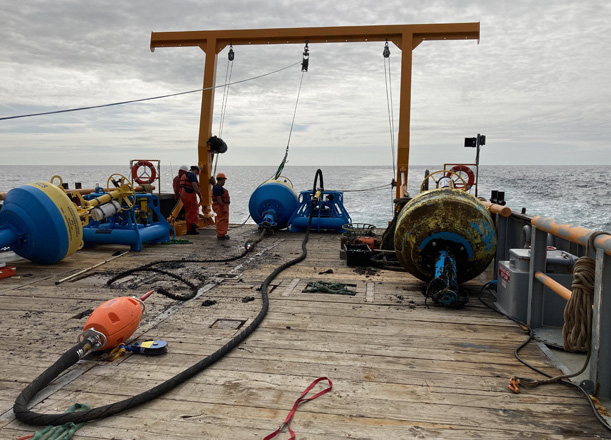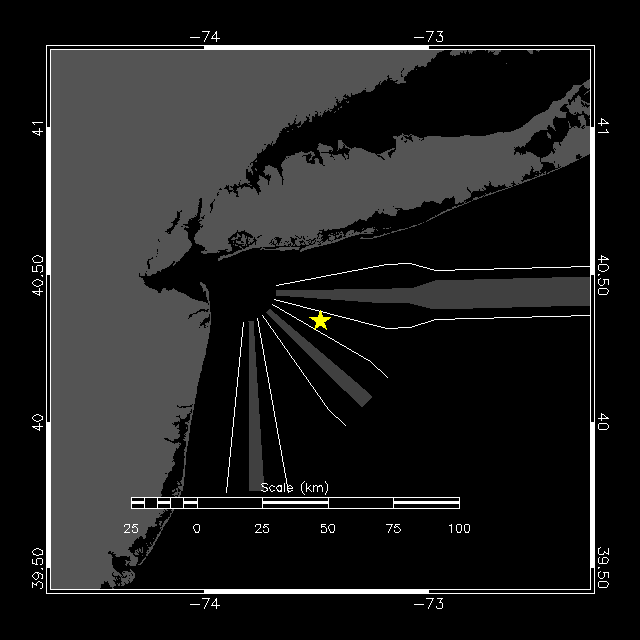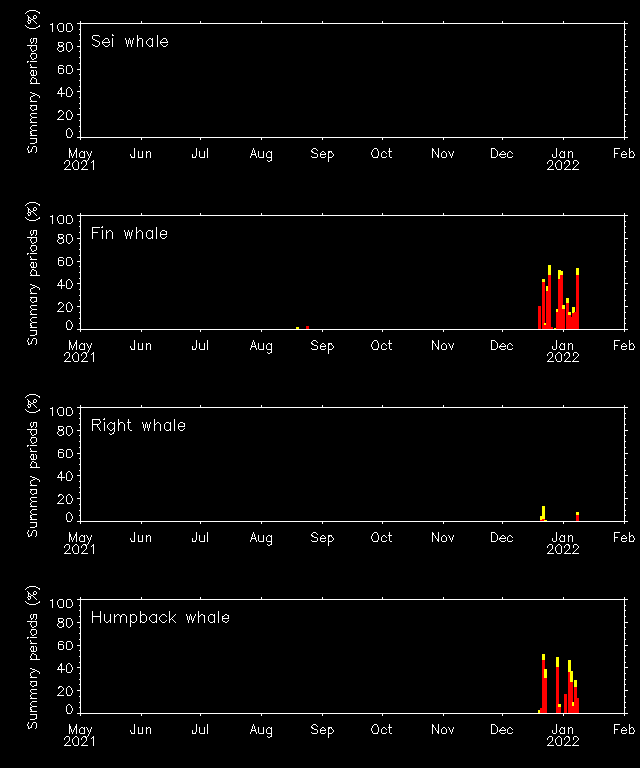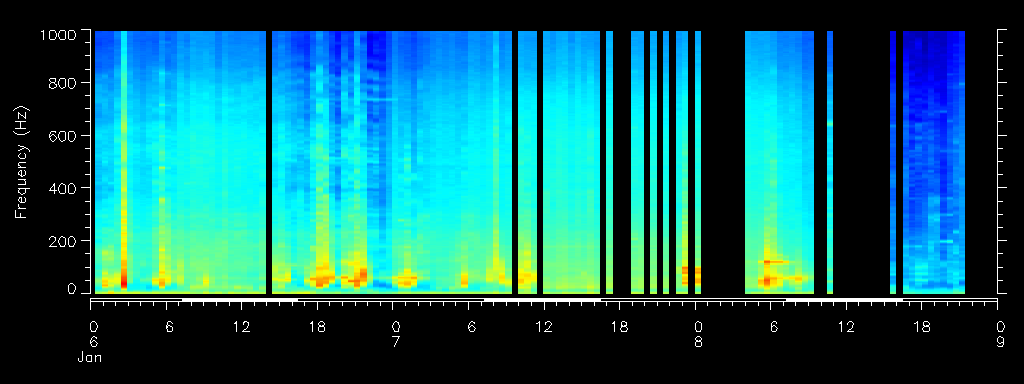Autonomous Real-time Marine Mammal Detections
Woods Hole Oceanographic Institution
New York Bight Buoy NW
Study objectives
A DMON buoy was deployed outside New York Harbor on May 25, 2021 to monitor the presence of baleen whales in near real time by automatically detecting and identifying their calls. The New York Bight is used for shipping, fishing, and wind farm development, yet the impacts of these activities on whales is poorly understood. The buoy will help to improve monitoring and conservation efforts for whales by providing scientists, managers, and the public with near real-time information on whale presence.
Principal Investigators: Mark Baumgartner (Woods Hole Oceanographic Institution) and Howard Rosenbaum (Wildlife Conservation Society)
Analyst: Julianne Wilder

Platform location:

Daily analyst review:
| | Detected |
| Possibly detected |
| Not detected |
Time series:

Diel plot:

Recent bacgkground noise:

Links to detailed information:
Automated detection data
DMON/LFDCS Diagnostics
Platform diagnostics
Sounds
What types of sounds are we monitoring? Find examples of the sounds right, fin, sei and humpback whales make here.
Questions
Please email Mark Baumgartner at mbaumgartner@whoi.edu. For a general desciption of the detection system and the autonomous platforms, visit dcs.whoi.edu.
Acknowledgements
The DMON buoy was prepared and deployed by the Woods Hole Oceanographic Institution's Mooring Operations and Engineering (MOE) Group - special thanks to Jeff Pietro (lead technician), Kris Newhall, Don Peters, and John Kemp. Critical engineering support was provided by Jim Partan, Keenan Ball, Dennis Giaya, Kayleah Griffen, Leo-Paul Pelletier and Tom Hurst (WHOI). Support for the deployment and operation of the buoy was provided by Equinor.
Home




